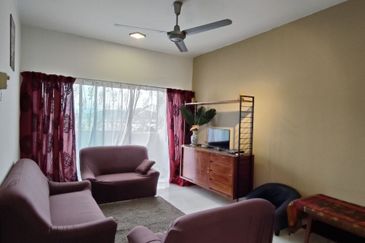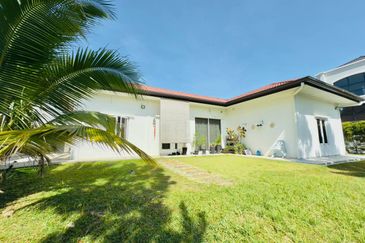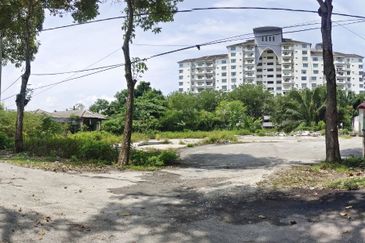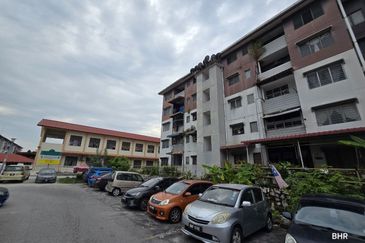
- JLL Malaysia logistics and industrial team member Derek Yap said warehouse absorption in Greater Kuala Lumpur remained robust last year, as demonstrated by the strong pre-commitment level from occupiers. “In 2023, the projects that were delivered had at least a 70% pre-let rate. Rental growth was also quite robust, reaching an annual rate of 7.4%.”
KUALA LUMPUR (Jan 29): Property subsectors including logistic warehouses, data centres and Grade A premium offices are expected to have the most positive growth this year, following their positive trends in demand, rental rates and market sentiment in 2023, according to JLL Malaysia managing director Jamie Tan when presenting at the JLL Greater Kuala Lumpur Property Market Monitor 4Q2023 press conference on Jan 29.
JLL Malaysia logistics and industrial team member Derek Yap said warehouse absorption in Greater Kuala Lumpur remained robust last year, as demonstrated by the strong pre-commitment level from occupiers. “In 2023, the projects that were delivered had at least a 70% pre-let rate. Rental growth was also quite robust, reaching an annual rate of 7.4%.”
Yap also mentioned that changes in the supply chain and implementation of China Plus One Strategy continue to drive the demand for high-quality logistics space. “The overall vacancy rate has increased but still remains low as the market saw a lot of new supply coming. Most of the developers that jumped on the bandwagon to develop warehouses in 2021/2022 will see their projects complete this year, so we can expect a significant increase in supply this year,” Yap said.
Due to that, Yap is expecting a more moderate rental growth for logistic warehouses of around 2% to 3%, as he anticipated that the increase in new supply should be able to meet the demand in the market. He pointed out that some of the future supply of logistic warehouses have already managed to secure tenancies for the respective warehouses upon completion.
Data centres, on the other hand, have experienced significant growth in terms of supply over the past five years. JLL Malaysia data centre team member Kent Seet said the current supply of data centres stands at approximately 200+ megawatts (MW) and is projected to reach 750MW by 2025.
Seet added, “[Additionally,] the country could also potentially have a total capacity of 2,700+ MW by 2027. This is possible given the increasing prevalence of artificial intelligence (AI) applications that are anticipated to drive the next surge in demand for data centres in Malaysia.
“The demand for AI applications has a ripple effect throughout the supply chain, catalysing advancements in power supply, cooling infrastructure and specialised hardware. The need for more computing power drives improvements in power delivery systems, while the high computational requirements lead to innovations in cooling technologies.”
Seet also shared that the sector will enjoy more growth, and with more growth comes an increased demand for power. More power generates more heat, leading to rising demand for better cooling methods, including immersive cooling and direct-to-chip cooling, among others.
Hence, locations offering ample power supply and other critical infrastructure will attract data centre investments in the coming years.
Speaking on the office market, JLL Malaysia office leasing advisory team member Quiny Lee said the office market experienced a surge in demand as companies increasingly relocated to modern and environmentally sustainable spaces that align with environmental, social and governance (ESG) principles.
She reported that office rental rates continued to grow in the fourth quarter of 2023 (4Q2023) where overall rents increased by 1.3% compared to 3Q2023, reaching RM6.42 psf per month.
“So the office market saw a notable increase in its net absorption during the previous quarter. This has led to higher occupancy rates and enhanced investor confidence, indicating sustained growth and a strong demand for office spaces. There continues to be a strong preference among tenants for high-quality buildings, particularly newer properties or Grade A premium buildings.
“In terms of vacancy performance between older and newer stock, it is noteworthy that green-certified office buildings outperformed their non-certified counterparts. In 3Q and 4Q2023, green-certified buildings witnessed a significant decrease in vacancy rates by 500 basis points. In comparison, non-green-certified buildings saw an increase of 100 basis points in vacancy rates,” Lee shared.
While Grade A and Grade A premium office buildings are becoming more popular among tenants, Lee said the older buildings, grades B and below, are seeing an increase in vacancy rates and subsequent downward pressure on average rental rates.
In order to curb overhang among these older buildings, both Lee and Tan said many parties are now repurposing these buildings or tearing them down and building new ones with high-quality specifications.
Overall, Tan said the positive trends observed across all market segments in 2023 are expected to continue into the next 12 months. “We expect the overnight policy rate (OPR) to remain at 3%. The OPR or any interest rates for any country relies heavily on the interest rates of the US [Federal] Reserve. However, now we can see certain countries moving away slowly towards an alternative currency. Some countries are even trading using their currency. In Malaysia, manageable or low interest rates can help to spur the economy as well as create opportunities for investors and developers.”
Looking to buy a home? Sign up for EdgeProp START and get exclusive rewards and vouchers for ANY home purchase in Malaysia (primary or subsale)!
TOP PICKS BY EDGEPROP

Garden City Homes, Seremban 2
Seremban, Negeri Sembilan

Bandar Warisan Puteri
Seremban, Negeri Sembilan

Taman Desa Saujana Langat
Hulu Langat, Selangor






















